Introduction:
The Keto Diet is a popular low-carb diet that focuses on eating high amounts of fat and very few carbs. This way of eating helps the body enter a state called ketosis, where it burns fat instead of carbs for energy. Many people follow the keto diet for beginners to lose weight, boost energy, and improve mental clarity. With the right keto diet meal plan, you can enjoy healthy foods while avoiding sugar and starch. Today, even options like Vibez Keto Gummies and HelloFresh Keto meals make it easier to stay on track. This complete guide will explain how the keto diet works and why it may be right for you.
The Keto Diet is a low-carbohydrate, high-fat eating plan designed to shift your body’s metabolism into a state called ketosis. In this state, your body burns fat for fuel instead of carbohydrates, leading to weight loss and other health benefits.
Understanding Ketosis and How It Works
Ketosis occurs when carbohydrate intake is significantly reduced, prompting the liver to convert fat into ketones, which serve as an alternative energy source. This metabolic shift can help in reducing body fat and improving energy levels.
Ketosis is a metabolic state where the body uses fat, rather than carbohydrates, as its primary energy source. When carbohydrate intake is significantly reduced, the liver converts fat into ketones, which supply energy to the body and brain. Achieving ketosis involves consuming approximately 70–75% of calories from fat, 20% from protein, and only 5–10% from carbohydrates.
Health Benefits of the Keto Diet
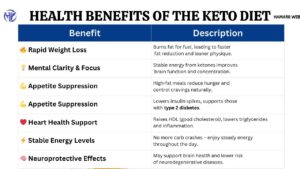
Weight Loss and Fat Burning
One of the primary reasons individuals adopt the Keto Diet is for weight loss. By minimizing carb intake, the body utilizes stored fat for energy, leading to effective fat burning and weight reduction.
Blood Sugar and Insulin Control
The Keto Diet can aid in stabilizing blood sugar levels and improving insulin sensitivity. This is particularly beneficial for individuals with type 2 diabetes or those looking to manage their blood glucose levels more effectively.
Keto-Friendly Foods You Can Eat
High-Fat, Low-Carb Food List
On the keto diet, it’s important to focus on foods that are high in healthy fats and low in carbohydrates. These include meats, fatty fish, eggs, butter, nuts, seeds, and low-carb vegetables like leafy greens. Incorporating these foods helps maintain ketosis and provides essential nutrients.
Embracing the Keto Diet involves consuming foods rich in healthy fats and low in carbohydrates. Some keto-friendly options include:
- Avocados: Packed with monounsaturated fats and fiber.
- Nuts and Seeds: Almonds, chia seeds, and flaxseeds provide healthy fats and protein.
- Fatty Fish: Salmon and mackerel are excellent sources of omega-3 fatty acids.
- Cheese: Offers fat and protein with minimal carbs.
- Low-Carb Vegetables: Spinach, kale, and broccoli are nutrient-dense and low in carbs.
Foods to Avoid on a Keto Diet

To stay in ketosis, it’s crucial to avoid high-carbohydrate foods. These include grains, sugary foods, most fruits, and starchy vegetables. Eliminating these items from your diet helps prevent spikes in blood sugar and supports the fat-burning process.
To maintain ketosis, it’s essential to avoid high-carb foods, such as:
- Grains: Bread, pasta, rice, and cereals.
- Sugary Foods: Sweets, candies, and sugary beverages.
- Starchy Vegetables: Potatoes, corn, and peas.
- Legumes: Beans, lentils, and chickpeas.
- Fruits: Bananas, apples, and grapes due to their high sugar content.
Keto Diet Plan for Beginners (Sample Meal Guide)
A sample keto diet meal plan might include eggs and avocado for breakfast, a salad with grilled chicken and olive oil for lunch, and salmon with steamed broccoli for dinner. Snacks can consist of nuts, cheese, or keto-friendly options like Vibez Keto Gummies. Planning meals ahead of time ensures adherence to the diet and helps maintain ketosis.
Starting the Keto Diet can be simplified with a structured meal plan. Here’s a sample day:
- Breakfast: Scrambled eggs with spinach and feta cheese.
- Lunch: Grilled chicken salad with olive oil dressing.
- Dinner: Baked salmon with steamed broccoli.
- Snacks: Celery sticks with almond butter or a handful of macadamia nuts.
Common Mistakes People Make on Keto
Common pitfalls on the keto diet include consuming too much protein, not eating enough fat, neglecting electrolyte intake, and not staying hydrated.These mistakes can hinder progress and make it difficult to achieve or maintain ketosis. Being mindful of these factors can improve the effectiveness of the diet.
Embarking on the Keto Diet journey requires awareness to avoid pitfalls:
- Not Tracking Carbohydrates: Underestimating carb intake can hinder ketosis.

- Insufficient Fat Consumption: Failing to consume enough healthy fats may lead to energy deficits.
- Neglecting Electrolytes: A lack of sodium, potassium, and magnesium can cause fatigue and cramps.
- Overeating Protein: Excess protein can be converted into glucose, affecting ketosis.
Side Effects of Keto and How to Handle Them
What is the Keto Flu?
When starting the keto diet, some individuals experience the “keto flu,” which includes symptoms like headache, fatigue, nausea, and irritability. These symptoms are temporary and result from the body adjusting to ketosis. Staying hydrated and replenishing electrolytes can alleviate these effects.
The Keto Flu is a group of symptoms some individuals experience when starting the Keto Diet, including headache, fatigue, nausea, and irritability. These symptoms are temporary and can be mitigated by:
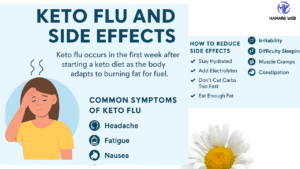
- Staying Hydrated: Drink plenty of water to alleviate dehydration.
- Replenishing Electrolytes: Incorporate foods rich in sodium, potassium, and magnesium.
- Gradual Transition: Slowly reducing carb intake can ease the body’s adjustment.
Tips for Staying on Track with Keto
To maintain success on the keto diet, it’s helpful to plan meals, track macronutrient intake, and prepare keto-friendly snacks. Joining support groups or consulting with a nutritionist can provide additional guidance and motivation. Consistency and preparation are key to sustaining the diet long-term.
Maintaining consistency on the Keto Diet involves:
- Meal Planning: Preparing meals in advance to avoid impulsive eating.
- Reading Labels: Being vigilant about hidden sugars and carbs in packaged foods.
- Seeking Support: Joining communities or forums for motivation and advice.
- Monitoring Progress: Keeping track of weight, energy levels, and ketone levels to stay motivated.
Is the Keto Diet Safe for Everyone?
Who Should Avoid Keto?
The keto diet may not be suitable for everyone. Individuals with certain medical conditions, such as pancreatitis, liver disease, or disorders of fat metabolism, should avoid the diet. It’s essential to consult with a healthcare provider before starting the keto diet, especially for those with existing health concerns.
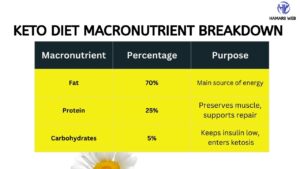
While the Keto Diet offers numerous benefits, it’s not suitable for everyone. Individuals with the following conditions should consult healthcare professionals before starting:
- Pancreatic Disease
- Liver Conditions
- Thyroid Problems
- Eating Disorders
- Pregnant or Breastfeeding Women
Final Thoughts: Should You Try the Keto Diet?
The Keto Diet has emerged as one of the most effective and scientifically supported methods for weight loss and overall health improvement. By drastically reducing carbohydrate intake and emphasizing healthy fats, the Keto Diet shifts your body into ketosis, a powerful metabolic state where fat becomes the primary energy source instead of glucose. This unique process not only promotes rapid fat loss but also helps stabilize blood sugar levels, reduce cravings, and improve mental clarity.
For beginners, the Keto Diet offers a sustainable way to shed unwanted pounds while enhancing energy levels and supporting brain function. It’s important to understand that success on the Keto Diet requires consistency in food choices, including avoiding sugars and starches, and embracing nutrient-rich, whole foods such as lean proteins, healthy fats, and low-carb vegetables.
The Keto Diet can be an effective tool for weight loss and improving certain health markers. However, it’s essential to approach it with proper knowledge and planning. Consulting with a healthcare provider before making significant dietary changes ensures safety and effectiveness.
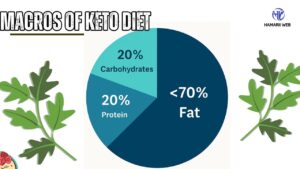
Conclusion:
The Keto Diet is a highly effective low-carb diet strategy that helps beginners achieve rapid weight loss and improved overall health. By significantly cutting carbs and increasing healthy fats, the Keto Diet encourages your body to enter ketosis, a natural metabolic state where fat is burned for energy instead of sugar. This shift promotes fat burning, reduces appetite, and supports stable blood sugar levels.
Many people looking for keto meal plans for beginners, keto recipes, or easy keto foods find that this diet is sustainable and enjoyable when they focus on whole, nutrient-dense foods. The Keto Diet also aids in enhancing mental clarity, boosting energy levels, and improving insulin sensitivity. It is often recommended for those managing type 2 diabetes, metabolic syndrome, or wanting to reduce inflammation naturally.
Despite some initial side effects like the keto flu, these can be managed through proper hydration and electrolyte balance. Adhering to the Keto Diet for beginners with consistent tracking of carb intake and incorporating healthy fats like avocado, nuts, and olive oil maximizes results. Many users also combine the diet with intermittent fasting for enhanced fat loss and health benefits.

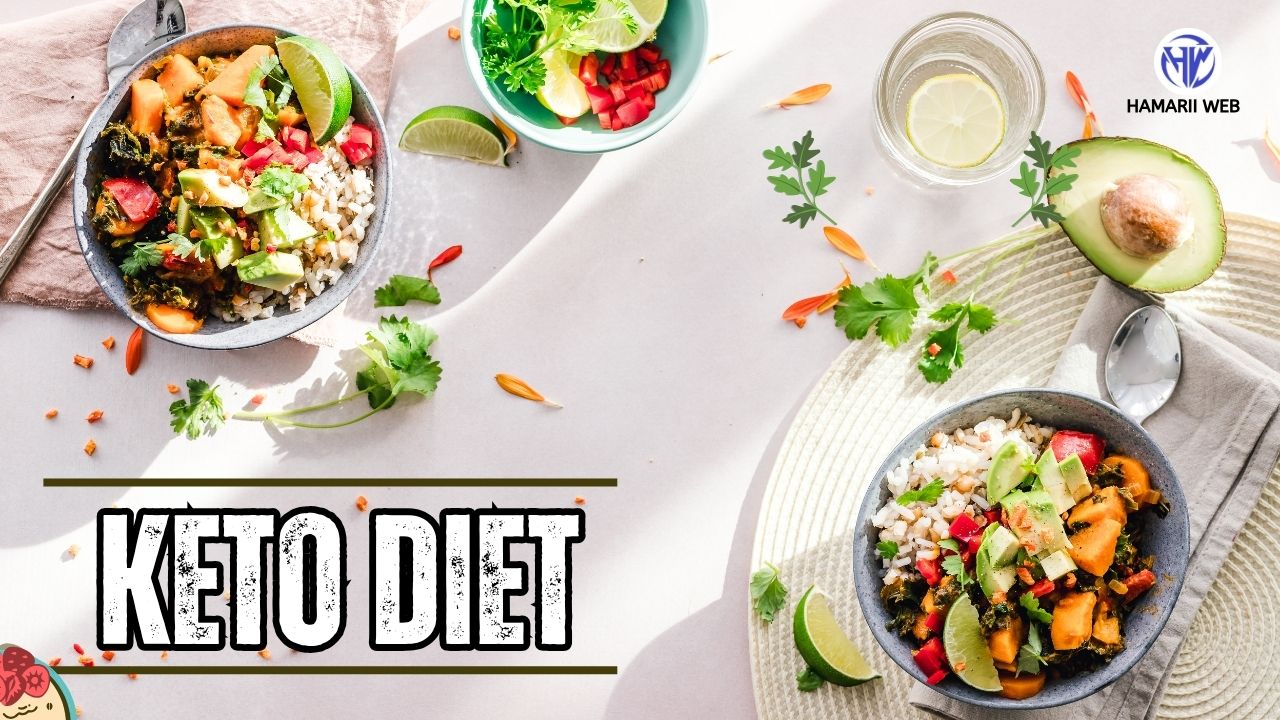
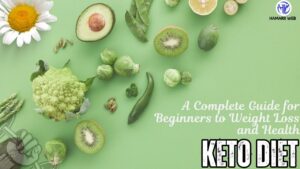
Этот сайт собирает актуальные инфосообщения со всего мира.
Здесь вы легко найдёте факты и мнения, культуре и других областях.
Новостная лента обновляется ежедневно, что позволяет следить за происходящим.
Простой интерфейс облегчает восприятие.
https://sneakero.ru
Каждая статья написаны грамотно.
Мы стремимся к информативности.
Оставайтесь с нами, чтобы быть всегда информированными.
Ваше торжество запомнится без наших воздушных шаров, доступных для заказа.
Доставка шаров в Нижнем Новгороде https://www.shariki-shop47.ru .